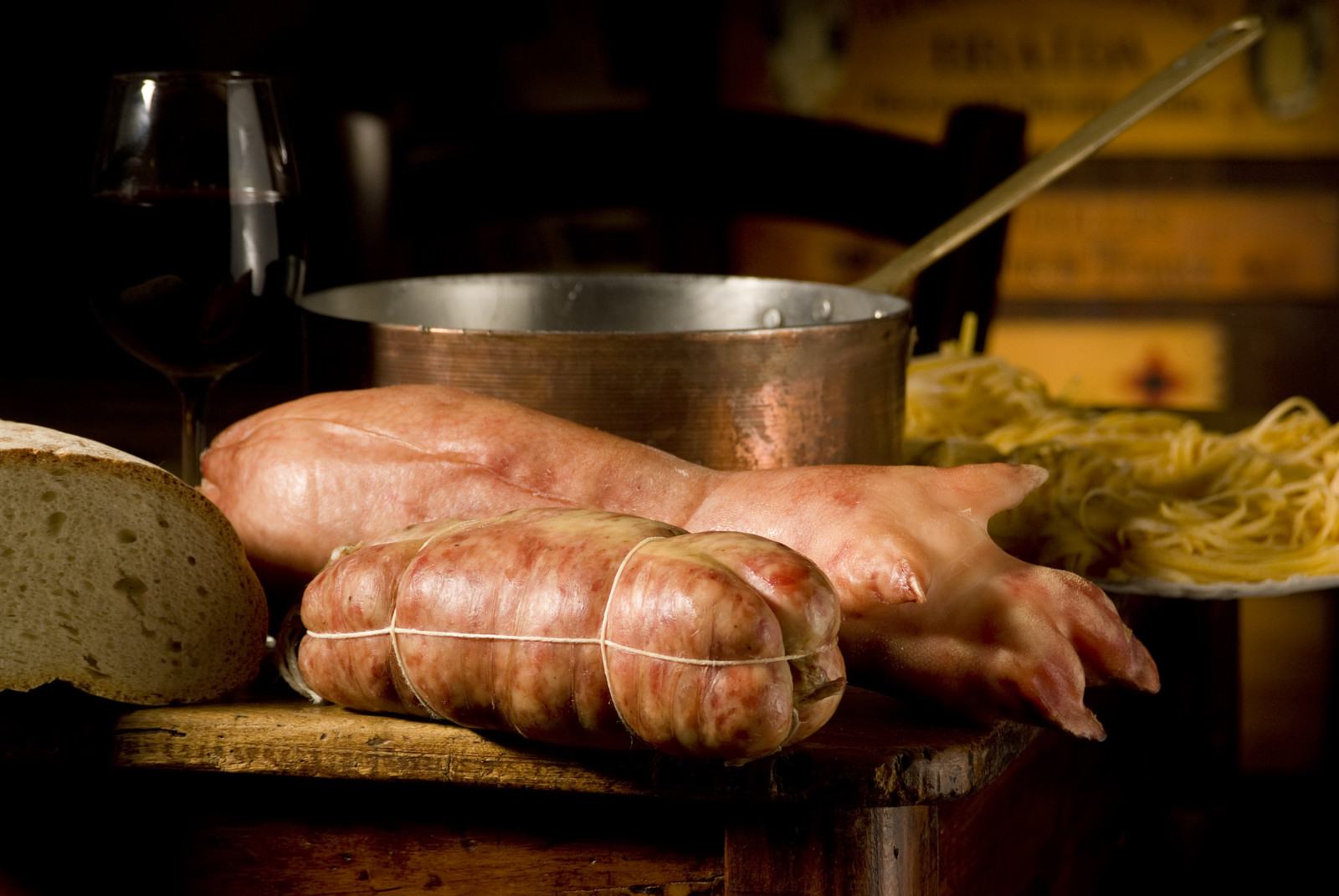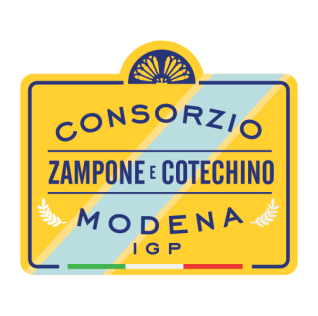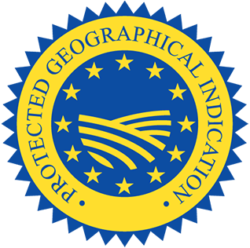
Consorzio Zampone e Cotechino Modena
Zampone Modena PGI | Cotechino Modena PGI


HISTORY
Zampone and Cotechino Modena are two of the most ancient products of Italian cured meats.
According to a legend, they first appeared in winter 1511 in Mirandola, when the city was placed under siege by the troops of Pope Julius II, Giuliano della Rovere. On that occasion, the people of Mirandolina are supposed to have been the first to creatively start stuffing pork meat into the rind or to use the rind as an ingredient for a cured meat produced for cooking, thus creating cotechino, and later using the rind to stuff the legs, with the production of zampone. Cotechino and zampone, magical gastronomic delicacies that have remained unchanged for centuries, were born of a survival instict.
The modern age witnessed extensive distribution of these two products on the markets as a result of the conversion of the first two sausage workshops, Frigeri and Bellentani, into a semi-industrial structure after economy underwent the transformation from a farming system based on craftsmanship to an industrial system in which intensive breeding prevailed.
These products are closely related to the area in which they are produced. The human factor is essential, namely the existence of highly specialised craftsmen, who have handed down the traditional productive techniques and skills in the course of time.
Consorzio Zampone e Cotechino Modena
STRADA 4 – Building Q8
20089 – Rozzano (MI)
Tel: 02 8925901
Fax: 02 57510607
Mail: info@modenaigp.it
Web: www.modenaigp.it
Product description
Zampone Modena and Cotechino Modena are cured meats made up of a mixture of pork meats that are produced from streaked muscles, pork fat, rind, salt, whole pepper grains and/or pepper pieces.
Wine, water, herbs and fragrant substances, spices and aromatic herbs can be added. Cotechino Modena and Zampone Modena must be easy to cut. The slice must be pink tending towards a dyshomogeneous red. They must be firm with a homogeneous granulometry.

Tecnica produttiva
Meats must be prepared for the two PGIs by means of mincing with mincing machine moulds having holes in the range of 7 –10 mm for muscle and adipose parts, and 3 –5 mm for the rind.
The mixture is prepared either in vacuum machines or in machines that operate with atmospheric pressure. The mixture thus obtained must be stuffed into the gut. Zampone Modena is stuffed into natural containers made up of the cutaneous coat of the anterior limb of the pig, complete with distal phalanges, and finally tied at the top end.
Cotechino Modena can, instead, be stuffed into either natural or reconstituted gut. Zampone Modena and Cotechino Modena can be marketed either as fresh products or as cooked products. Meats must be prepared for the two PGIs by means of mincing with mincing machine moulds having holes in the range of 7 –10 mm for muscle and adipose parts, and 3 –5 mm for the rind. The mixture is prepared either in vacuum machines or in machines that operate with atmospheric pressure.
The mixture thus obtained must be stuffed into the gut. Zampone Modena is stuffed into natural containers made up of the cutaneous coat of the anterior limb of the pig, complete with distal phalanges, and finally tied at the top end. Cotechino Modena can, instead, be stuffed into either natural or reconstituted gut.
Nutritional values for 100 g
(Source: INRAN, 2011)
| Protein | Lipids | Salt | Iron | Vitamin B6 | Energy |
|---|---|---|---|---|---|
| 23,6 | 16,3 | 2,2 | 1,44 | 0,06 | 253 Kcal |
| 23,7 | 17,4 | 1,7 | 1,28 | 0,03 | 262 Kcal |
- Zampone Modena PGI
- Cotechino Modena PGI